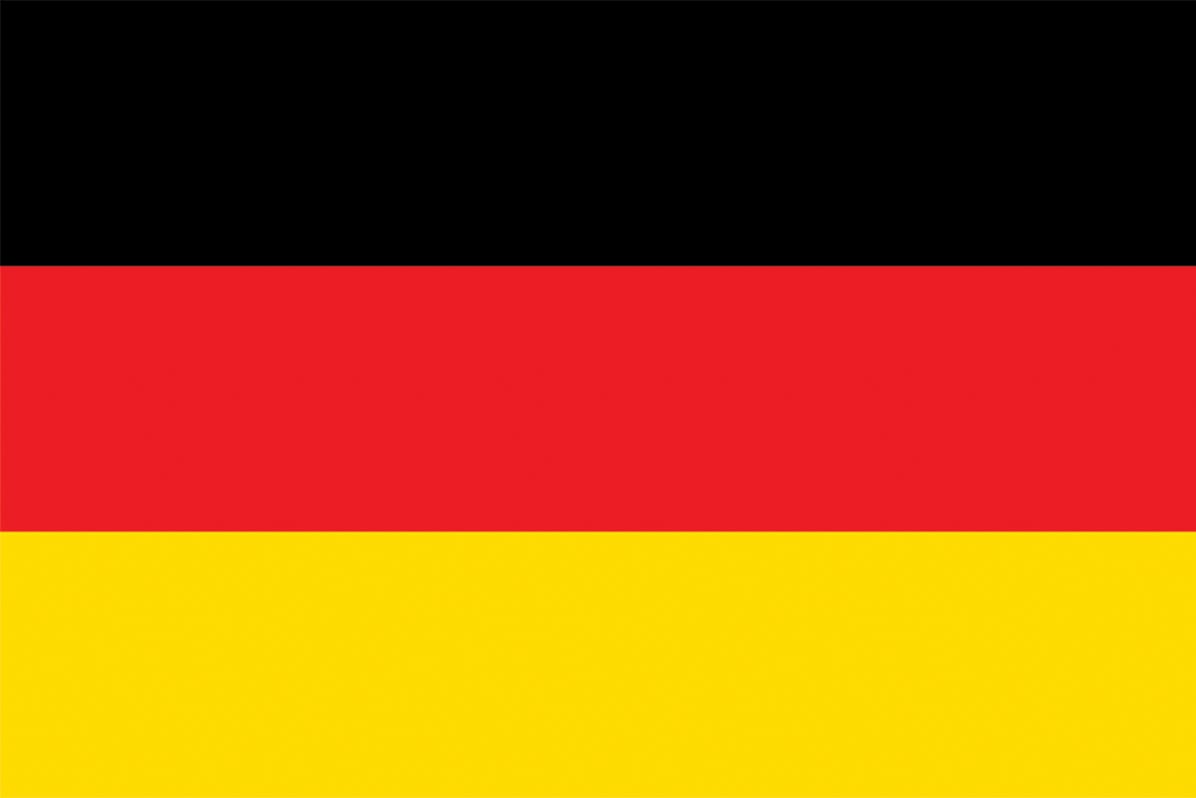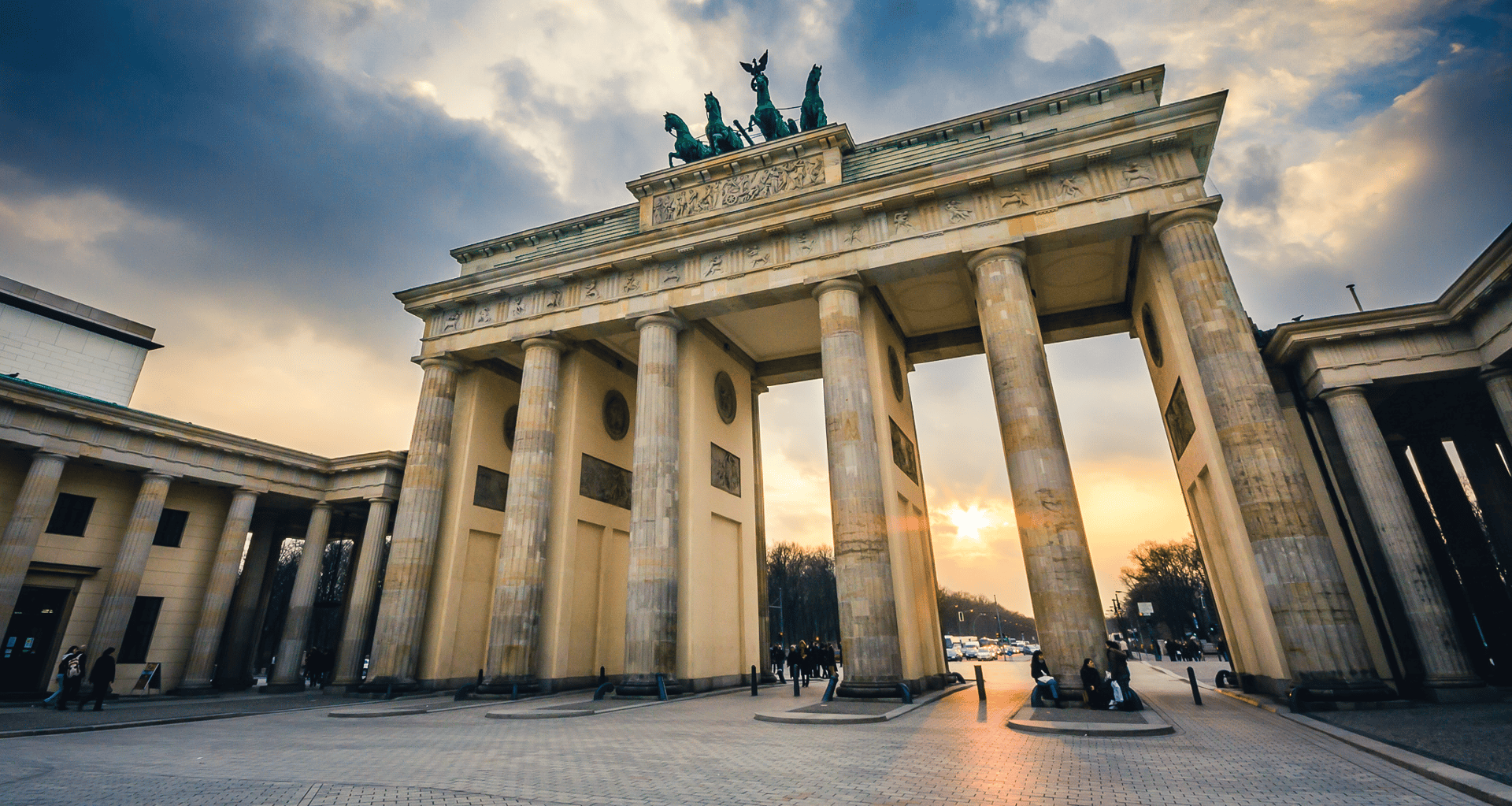bulletin | cover feature
Market Snapshot
Economic powerhouse, recharging
Germany looks to rebound from global economic pressures, supply chain disruptions, and war to return to GDP growth.
By Randy B. Hecht

Reichstag Building.
Credit: hoch3media, Unsplash
The 27 member countries in the European Union account collectively for one-sixth of global trade and make up the world’s third-largest economy, behind the United States and China. But the EU’s economic clout derives disproportionately from one powerhouse member: Germany generates 25% of the EU’s annual GDP of 16 trillion euros (equivalent to US$17.569 trillion).
The CIA World Factbook sums up Germany’s economic strengths and challenges:a on one hand, a service-based and export-driven economy, highly skilled and educated labor force, and conservative fiscal policies; on the other hand, disruptions caused by lost access to Russian gas, increased defense spending, and rising debts.
The Department of Commerce International Trade Administration flags additional concerns, including “demographic changes and resulting labor shortages, supply chain bottlenecks, burdensome debt, especially on the municipal level,” and high inflation, including energy price hikes that resulted from the war in Ukraine.
These factors contributed to Germany’s falling into a recession last winter, when the Federal Statistics Office reported drops in economic output of 0.4% and 0.1% during the fourth quarter 2022 and the first quarter 2023, respectively. Although the country exited recession in the second quarter of 2023, economic output was stagnant for the period.
ADVERTISEMENT
On July 17, 2023, the International Monetary Fund forecast “slightly negative” annual GDP growth for Germany in 2023 but added “Growth is expected to regain momentum gradually in 2024–25…Inflation is expected to continue falling amid softening energy prices and tightening fiscal policy…Over the medium term, average GDP growth is expected to fall back below 1% due to accelerating headwinds from population aging, absent significant increases in productivity and/or labor supply growth.”b
Germany’s estimated 2023 population of 84,220,184 represents a negative growth rate of 0.12%. The active labor force accounted for 44,515,312 people, or 52.85% of the total population in 2022. Real GDP for 2021 is estimated at $53,200 per capita.
Historically, Germany has recorded a trade surplus, with 2021 exports estimated at $2.004 trillion versus import volume of $1.775 trillion. Leading export commodities include cars and vehicle parts, packaged medicines, medical cultures and vaccines, aircraft, industrial machinery, and medical instruments. The country’s largest export trading partners are the United States, China, France, the Netherlands, and Italy.
Leading import commodities are cars and vehicle parts, medical cultures/vaccines, packaged medicines, crude petroleum, natural gas, and computers. Germany’s largest import trading partners are China, the Netherlands, Poland, Italy, and France.
Leading industries in Germany include automotive, mechanical engineering, chemicals, electrical and batteries, manufacturing, metals, finance and banking, telecommunications, healthcare, and retail. Coal, lignite, natural gas, iron ore, copper, nickel, uranium, potash, salt, construction materials, timber, and arable land are among the country’s natural resources.
The Commerce Department’s International Trade Administration’s Germany Country Commercial Guide covers various topics,c such as doing business in Germany, leading sectors for exports and investments, and customs regulations and standards (including tariff and non-tariff barriers, export controls, import requirements and documentation, product standards, and trade agreements).
Germany is the sixth-largest market for U.S. exports. Additional information and foreign commerce support are available via the websites of American Chamber of Commerce in Germanyd and German American Business Council.e
DIRECTORY
Associations
German Ceramic Society (Media Library)
The Deutsche Keramische Gesellschaft (German Ceramic Society, DKG), based in Cologne, is a professional networking and knowledge exchange organization dedicated to promoting the “development and application of new ceramic materials and products at home and abroad.” In addition to sponsoring educational activities, symposiums, and congresses, it is a funding agency for ceramics R&D.
Its research projects “are generally developed in the DKG committees, but also bilaterally between members and research institutes,” the website notes. “For the DKG, privately financed or funded joint industrial research is an essential part of its research activities.”
The DKG’s cooperation partners include
Corporations and research institutes
CeramTec GmbH
Plochingen
Ceratec GmbH
Kreuztal
Christian Guttmann nanoquartz
Ruhla
DLR Zentrum Koeln
German Aerospace Center
Cologne
DoCeram
Dortmund
Duravit AG
Hornberg
FCT Fine Ceramic Technologies
Frankenblick
Forschungszentrum Juelich
Jülich
Fraunhofer IKTS
Dresden
Fritz-Haber-Institut der Max Planck Gesellschaft
Berlin
Glassomer GmbH
Freiburg im Breisgau
Grow Platform GmbH - Bosch Advanced Ceramics
Ludwigsburg
GTT Technologies
Herzogenrath
Heraeus
Hanau
INMATEC Technologies GmbH
Rheinbach
KRAHN Ceramics GmbH
Dinslaken
Leibniz Institute for Solid State & Materials Research
Dresden
Max Planck Gesselschaft
Multiple locations
MTU Aero Engines
Munich
Nabaltec AG
Schwandorf
Nano-Care Deutschland AG
Rehlingen-Siersburg
Onyx Coating GmbH
Berlin
PI Ceramic GmbH
Lederhose
QSIL Ingenieurkeramik
Ilmenau
Rauschert Industries Inc.
Pressig
SCHOTT AG
Mainz
Sembach GmbH & Co. KG - Technische Keramik
Sembach Technical Ceramics
Lauf an der Pegnitz
uniglassAC GmbH
Aachen
Zell Quartzglas and Technical Ceramics Technology GmbH
Geesthacht

Brandenburg Gate.
Credit: Modes Rodríguez, Flickr (CC BY-NC-ND 2.0)

Brandenburg Gate.
Credit: Modes Rodríguez, Flickr (CC BY-NC-ND 2.0)
Universities
Eberhard Karls Universität Tübingen
Tübingen
Friedrich Schiller University Jena
Jena
Goethe University Frankfurt
Frankfurt am Main
Humboldt-Universität zu Berlin
Berlin
Justus-Liebig-University Giessen
Giessen
Karlsruhe Institute of Technology
Karlsruhe
Leibniz University Hannover
Hanover
RWTH Aachen University
Aachen
Technische Universitaet Darmstadt
Darmstadt
TU Bergakademie Freiberg
Freiberg
University of Erlangen-Nuremberg Institute of Biomaterials
Erlangen
Universität Duisburg-Essen
Duisburg-Essen
Universität Erlangen-Nuremberg
Erlangen-Nuremberg
Universität Bayreuth
Bayreuth
Universität Bremen
Bremen
Universität zu Köln
Cologne
Universität Freiburg
Freiburg im Breisgau
Universität Koblenz
Koblenz
Universität Stuttgart
Stuttgart

Oktoberfest celebrations.
Credit: Patrick Langwallner, Unsplash

Oktoberfest celebrations.
Credit: Patrick Langwallner, Unsplash

